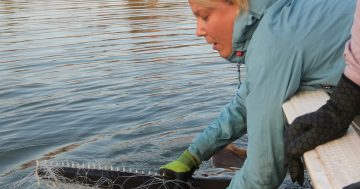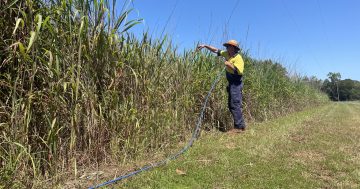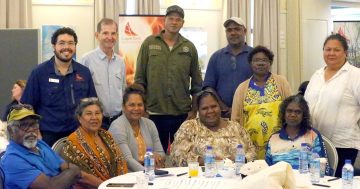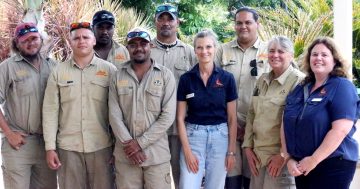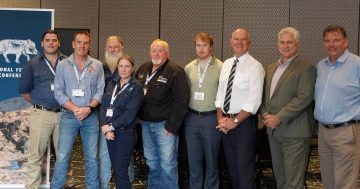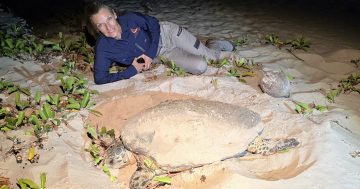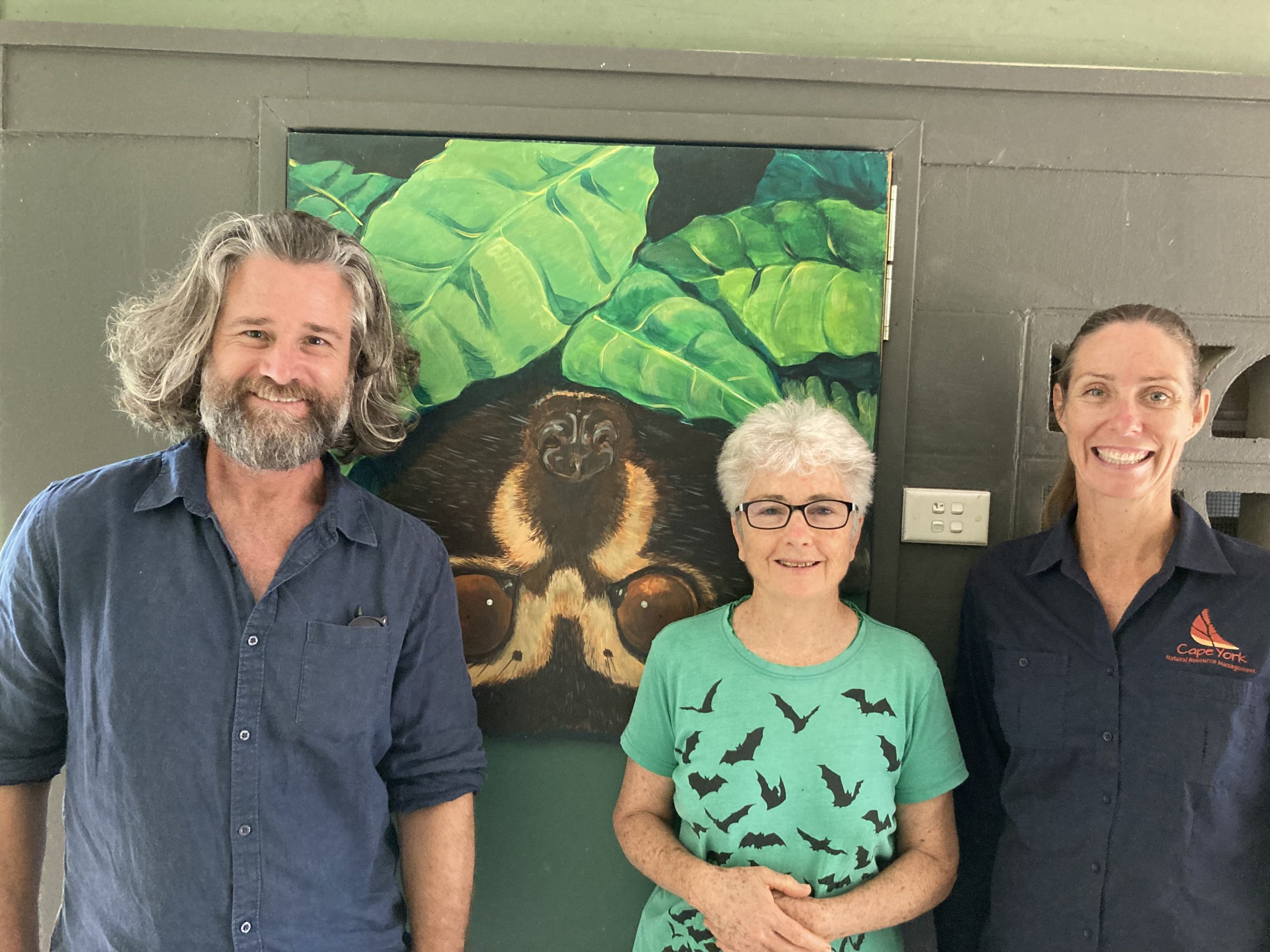
Cape York Natural Resource Management’s David Preece and Maree Coulson, pictured with Jenny Mclean (centre) at the Tolga Bat Hospital, are urging Cape York residents to report local sightings of the endangered spectacled flying fox. Photo: Supplied.
Cape York Natural Resource Management (NRM) is calling on the Cape York community to report any sightings of the rare spectacled flying fox as part of a project to raise awareness about the endangered species, and where it lives and feeds across the region.
Cape York NRM project officer Maree Coulson is leading the project and said little was known about the mammal’s footprint in the north of the state.
“We need to know more about their presence on Cape York, and we need the community’s help with this,” Ms Coulson said.
“This project aligns with the federal recovery plan for the species, Pteropus conspicillatus.
“We need to build on existing knowledge of their range and presence, raise awareness in the community and also implement actions to support the overall protection of spectacled flying foxes.; there is limited information known about their presence on Cape York, so the information we’re looking for from the community is the time, place and number of bats seen – photographs are also great.
Ms Coulson said spectacled flying foxes were considered a rainforest specialist among the Australian flying foxes and played an important role in seed dispersal and rainforest regeneration.
“They also forage in eucalypt, melaleuca and mangrove forests,” she said.
“Whether you’re a land manager, Traditional Owner, scientist, bird watcher or tourist, we’re asking anyone who sees a specky on the Cape to let us know.”
The project officer and her team met with Tolga Bat Rescue and Research director Jenny Mclean last month as part of their engagement with local experts to support the project.

Spectacled flying foxes recover with their furry friends at the Tolga Bat Hospital. Photo: Supplied.
The group’s hospital in Atherton has cared for more than 300 bats this wet season.
“It was great to meet Jenny, who took us on a tour of the hospital,” Ms Coulson said.
“During the wet season, the bat hospital cares mostly for spectacled flying foxes impacted by ticks; many of those are orphaned pups, so the Tolga Bat Hospital provides individual care for them; a team of live-in volunteers is vital to their success and Jenny and her team are doing a fantastic job caring for them.”
Ms Mclean said they had been managing and monitoring tick paralysis and birth abnormalities in spectacled flying fox camps for nearly three decades.
“Most Australian wildlife have lived with tick paralysis for a very long time and have good immunity, but it seems flying foxes have only been affected for about 40 years,” she said.
“It’s an agonising death for them [and] tick season unfortunately is also birthing season.”
Ms Coulson said Cape York residents could report sightings using a QR code created for the monitoring project.
“We need people to report any sightings from along eastern Cape York to the tip, and that will inform our conservation efforts for the species,” she said.
“If you see a specky, please record the details of your sighting and let us know.”

Scanning this QR code will allow Cape York residents to report sightings of the endangered spectacled flying fox for the Cape York Natural Resource Management monitoring project. Photo: Supplied.


